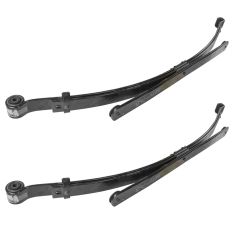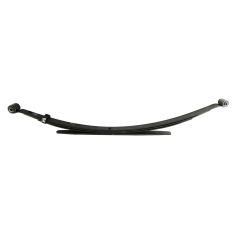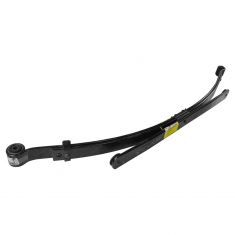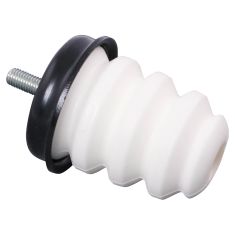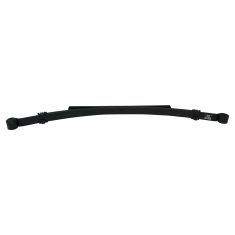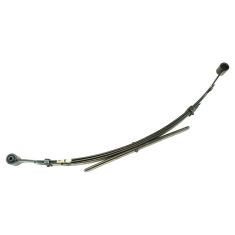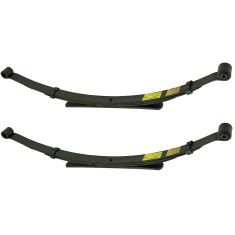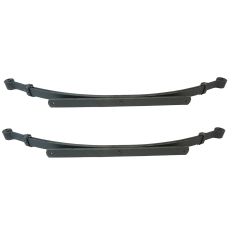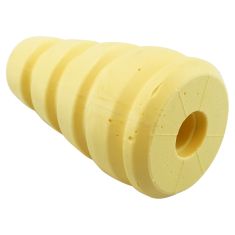Leaf Springs
-
-
- Air Deflectors & Valance Panels
- Battery Trays & Related
- Body Panels
- Bumpers & Related - Front & Rear
- Convertible Tops, Soft Tops, & Parts
- Decal & Stripe Kits
- Emblems & Nameplates
- Engine Compartment Trim
- Frame Parts & Bushings
- Fuel Door Parts
- Fuel Tank Filler Neck
- Grille
- Header Panel
- Hood & Hatch Lift Supports
- Hood Latch & Catch Brackets
- Hood Release Cable
- Jack Pads
- Radiator Supports
- Rust Repair Panels
- Splash Shields & Fender Liners
- Tailgate Cables
- Tailgate Hinges & Related
- Weatherstripping
-
- Car Covers
- Exterior Lighting
- Exterior Parts & Accessories
- Exterior Safety & Security
- Exterior Storage
- Fender Flares
- License Plate Brackets & Frames
- Mud Flaps & Splash Guards
- Nerf Bars, Side Steps, Running Boards
- Radio Antenna
- Rain Deflectors
- Roll Bars, Light Bars, & Related
- Roof Rack
- Skid Plates
- Spare Tire Carriers & Related
- Spare Tire Covers
- Tire Care
- Tonneau Covers
- Tow Hooks & D-Shackles
- Towing Accessories
- Trailer Hitch & Components
-
- Accelerator Pedal Pad
- Auto Carpet
- Brake Pedal Pad
- Clutch Pedal Pad
- Console Parts
- Dash Pad Cover
- Dash Vents
- Floor Mats & Liners
- Horns & Horn Parts
- Interior Parts & Accessories
- Mirror - Interior Rear View
- Seat Cover and Sets
- Seat Heater Kits
- Seat Parts and Accessories
- Sun Visors & Related
- Trunk & Cargo Parts
-
- Accelerator Pedals & Sensors
- Alarms, Control Modules, & Remote Start
- Cruise Control Switch & Lever
- Electrical Parts
- Hazard Switch
- Ignition Key Lock Cylinder
- Ignition Switch
- Keyless Entry Remote & Related
- Neutral Safety Switch
- Parking Assist Cameras & Monitors
- Power Mirror Switch
- Power Seat Switches
- Power Window Switch
- Radio, Navigation, Entertainment
- Reverse Light Switch
- Trunk Release & Lock Solenoids
- Turn Signal Switches and Levers
- Windshield Wiper Switch
-
- Idler Arm
- Pitman Arm
- Power Steering Hoses
- Power Steering Oil Cooler
- Power Steering Pressure Sensor
- Power Steering Pump
- Power Steering Pump Cooling Fan
- Power Steering Pump Pulley
- Power Steering Pump Reservoir
- Steering Dampers
- Steering Knuckles and Spindles
- Steering Rack and Gear Boxes
- Steering Shafts & Couplers
- Steering Wheels & Column Parts
- Tie Rods & Adjusting Sleeves
-
-
-
-
-
18
2
10
10
-
Notify When Available
Replaces Chevrolet GMC Rear Driver & Passenger Side Leaf Spring 2 Piece Set General Motors OEM GMSFK00016
Brand: General Motors OEM - GMSFK00016$604.95Save 36%List $941.95 Save $337.00Replaces Chevrolet GMC Rear Driver & Passenger Side Leaf Spring 2 Piece Set General Motors OEM GMSFK00016
Brand: General Motors OEM - GMSFK00016$604.95Save 36%List $941.95 Save $337.00 -
Notify When Available
Replaces Ford Mazda Rear Driver & Passenger Side Leaf Spring 2 Piece Set Dorman OE Solutions 1ASFK01704
Brand: Dorman OE Solutions - 1ASFK01704$504.95Save 34%List $762.95 Save $258.00Replaces Ford Mazda Rear Driver & Passenger Side Leaf Spring 2 Piece Set Dorman OE Solutions 1ASFK01704
Brand: Dorman OE Solutions - 1ASFK01704$504.95Save 34%List $762.95 Save $258.00 -
Notify When Available
Replaces Ford Mazda Rear Leaf Spring Dorman OE Solutions 929-202
Brand: Dorman OE Solutions - 929-202$259.95Save 33%List $387.95 Save $128.00Brand: Dorman OE Solutions - 929-202$259.95Save 33%List $387.95 Save $128.00 -
Notify When Available
Replaces Chevrolet GMC Rear Leaf Spring General Motors OEM 23418311
Brand: General Motors OEM - 23418311$304.95Save 36%List $474.95 Save $170.00Brand: General Motors OEM - 23418311$304.95Save 36%List $474.95 Save $170.00 -
Notify When Available
Replaces Chevrolet GMC Rear Leaf Spring Bump Stop Dorman OE Solutions 523-049
Brand: Dorman OE Solutions - 523-049$45.45Save 25%List $60.95 Save $15.50Brand: Dorman OE Solutions - 523-049$45.45Save 25%List $60.95 Save $15.50 -
Notify When Available
Replaces Chevrolet GMC Rear Leaf Spring Dorman OE Solutions 929-115
Brand: Dorman OE Solutions - 929-115$414.95Save 33%List $619.95 Save $205.00Brand: Dorman OE Solutions - 929-115$414.95Save 33%List $619.95 Save $205.00 -
Notify When Available
Replaces 2005-13 Nissan Xterra Rear Leaf Spring Dorman OE Solutions 929-502
Brand: Dorman OE Solutions - 929-502$344.95Save 32%List $509.95 Save $165.00Brand: Dorman OE Solutions - 929-502$344.95Save 32%List $509.95 Save $165.00 -
Notify When Available
Replaces 2005-13 Nissan Xterra 4 Wheel Drive Rear Driver & Passenger Side Leaf Spring 2 Piece Set Dorman OE Solutions 1ASFK04495
Brand: Dorman OE Solutions - 1ASFK04495$674.95Save 33%List $1,006.95 Save $332.00Brand: Dorman OE Solutions - 1ASFK04495$674.95Save 33%List $1,006.95 Save $332.00 -
Notify When Available
Replaces Chevrolet GMC Rear Driver & Passenger Side Leaf Spring 2 Piece Set Dorman OE Solutions DMFSK00035
Brand: Dorman OE Solutions - DMFSK00035$824.95Save 33%List $1,228.95 Save $404.00Replaces Chevrolet GMC Rear Driver & Passenger Side Leaf Spring 2 Piece Set Dorman OE Solutions DMFSK00035
Brand: Dorman OE Solutions - DMFSK00035$824.95Save 33%List $1,228.95 Save $404.00 -
Notify When Available
Replaces 1996-14 Chevrolet GMC Rear Leaf Spring Bump Stop Dorman OE Solutions 523-065
Brand: Dorman OE Solutions - 523-065$35.45Save 26%List $47.95 Save $12.50Brand: Dorman OE Solutions - 523-065$35.45Save 26%List $47.95 Save $12.50
loading...
Choose the Make of Your Vehicle
